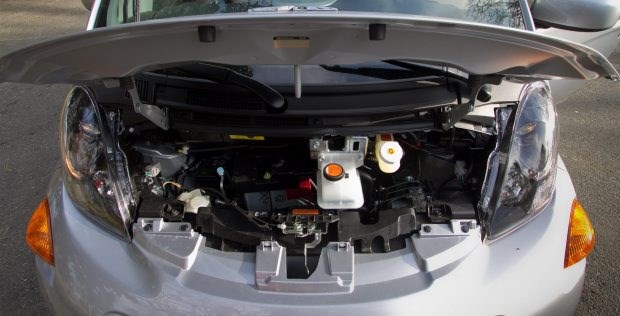What's it like to own an electric car?
Taking it for a test drive is one thing, but what's it like to live with 24/7? That's what you are going to find out as I write about my experiences living with one for the next 52 weeks.
Owning an electric car isn't like anything most of us have experienced before. Until last October you couldn't buy one in ÎÚÑ»´«Ã½ (the folks in the U.S. beat us by a few months).
But now there are three on the market, with more slated to be introduced in the months ahead.
I have been impressed with the new technology. So a few weeks ago I bought one with my own money. That's right - this is no public-relations exercise with a borrowed manufacturer's car.
You can say I am all charged up (pardon the pun) about my purchase. I get to share my first year's ownership experience with ÎÚÑ»´«Ã½ readers.
We embark on a journey few have taken. The ÎÚÑ»´«Ã½ will be launching a home on the paper's website so people can find all the articles related to my year "plugged in" contained in one, easy-to-locate place. I will also blog about my experiences and the tidbits of news as it pertains to the electro-mobility.
But why choose an electric car? There are three major reasons I have embarked down this road:
FINANCIAL
Switching from oil to electricity results in an immediate monetary incentive - no more gas bills.
Until now, like every other driver on the planet, I have been held captive by Big Oil. I get a liberating feeling every time I drive past a gas station.
My last commuter vehicle was a V-6 powered Ford Ranger pickup. If I drove an average of 20,000 kilometres a year, with 55 per cent city and 45 per cent highway driving, my annual gas bill (based on $1.25 per litre) would be $3,266.
The same distance in my electric car, based on eight cents per kilowatt hour for electricity, will cost me only $298 annually.
If you have had your calculator out, you will have quickly figured out that my fuel bill just dropped by about 90 per cent - money that stays in my pocket.
In dollar terms, it's a saving of $2,968 a year and $14,840 over five years - assuming the price of gas stays constant. If history is any indication, gas prices will rise over the years. Five years ago, unleaded was about 95 cents a litre. That's a 31 per cent increase in the period.
It could have been worse. In 2008, gas prices peaked at $1.53 in July before plunging to 81 cents the same winter as the global recession took hold and curbed demand. It has been rising ever since.
Electricity rates will probably rise in the next five years as well. But even if it increases by 50 per cent, it will only boost the cost of a kilowatt hour by four cents, to 12 cents per kWh. I am sure I can handle that.
Environmental
Can a "car guy" also be a "green guy"? I will find out. Owning an electric car means I will no longer be part of the problem, but part of the solution. Electric vehicles produce no exhaust. I can sleep better knowing I don't contribute to greenhouse-gas emissions caused by transportation.
By switching from my V-6 Ford Ranger to an electric vehicle, I will be sparing my neighbours the 5,612 kilograms of carbon dioxide I would have normally produced in a typical year of driving.
Some critics argue that EVs aren't 100 per cent green because not all of our electricity is created by clean hydro power. While that may be the case in some parts of the world, ÎÚÑ»´«Ã½, and ÎÚÑ»´«Ã½ in particular, is blessed with abundant hydro-generated electricity - the greenest type of renewable energy. According to ÎÚÑ»´«Ã½ Hydro, 93 per cent of our electricity is generated by green sources.
Lifestyle
We are fortunate to call Victoria our home. Its compact land mass means most trips are short. This is the ideal model for an electric car.
While some of us commute a long distance to get to work, for the majority the distance isn't more than 50 kilometres one way.
The car I chose for this experiment is a four-door hatchback, large enough for my small family and two dogs on our trips shopping or to the park. In our family, we also have a conventional gasoline-powered car that my wife drives. We will keep this car to use on longer trips because the electrical charging infrastructure doesn't exist yet to allow me to visit my aunt in Nanaimo and return on the same day.
While I will be writing intensely about my life with an EV in the year ahead, my experience won't stop after 52 weeks. This will be my primary source of transportation for the next few years. By then the road ahead should become a bit clearer. We will probably get a sense of the market by then. Will it be a success, or are EVs a flash in the pan?
The biggest question will be whether you would want to own one after vicariously living in the driver's seat.
Buckle up. I promise to give you an interesting ride along the electric highway.



